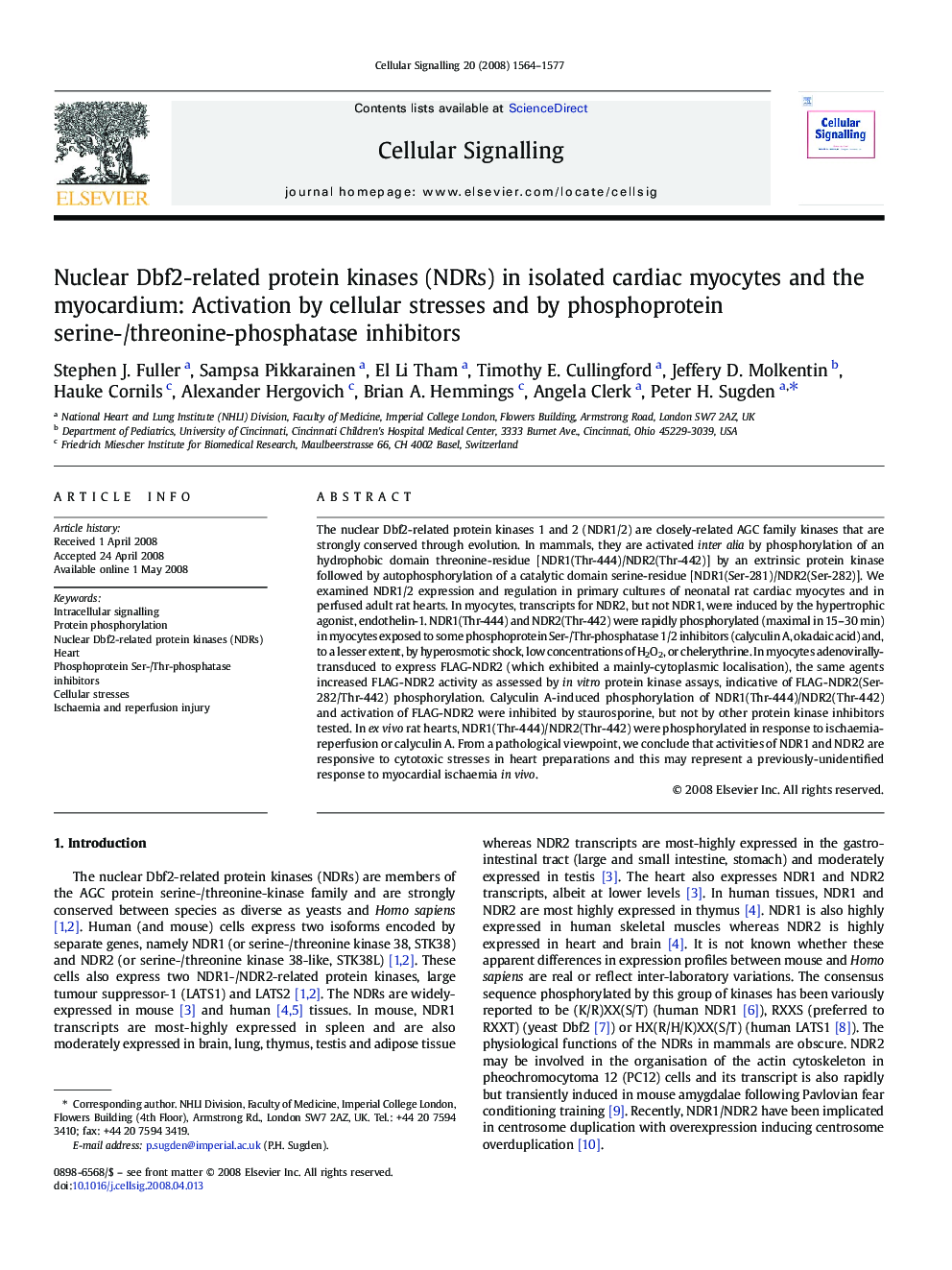| Article ID | Journal | Published Year | Pages | File Type |
|---|---|---|---|---|
| 10817016 | Cellular Signalling | 2008 | 14 Pages |
Abstract
The nuclear Dbf2-related protein kinases 1 and 2 (NDR1/2) are closely-related AGC family kinases that are strongly conserved through evolution. In mammals, they are activated inter alia by phosphorylation of an hydrophobic domain threonine-residue [NDR1(Thr-444)/NDR2(Thr-442)] by an extrinsic protein kinase followed by autophosphorylation of a catalytic domain serine-residue [NDR1(Ser-281)/NDR2(Ser-282)]. We examined NDR1/2 expression and regulation in primary cultures of neonatal rat cardiac myocytes and in perfused adult rat hearts. In myocytes, transcripts for NDR2, but not NDR1, were induced by the hypertrophic agonist, endothelin-1. NDR1(Thr-444) and NDR2(Thr-442) were rapidly phosphorylated (maximal in 15-30Â min) in myocytes exposed to some phosphoprotein Ser-/Thr-phosphatase 1/2 inhibitors (calyculin A, okadaic acid) and, to a lesser extent, by hyperosmotic shock, low concentrations of H2O2, or chelerythrine. In myocytes adenovirally-transduced to express FLAG-NDR2 (which exhibited a mainly-cytoplasmic localisation), the same agents increased FLAG-NDR2 activity as assessed by in vitro protein kinase assays, indicative of FLAG-NDR2(Ser-282/Thr-442) phosphorylation. Calyculin A-induced phosphorylation of NDR1(Thr-444)/NDR2(Thr-442) and activation of FLAG-NDR2 were inhibited by staurosporine, but not by other protein kinase inhibitors tested. In ex vivo rat hearts, NDR1(Thr-444)/NDR2(Thr-442) were phosphorylated in response to ischaemia-reperfusion or calyculin A. From a pathological viewpoint, we conclude that activities of NDR1 and NDR2 are responsive to cytotoxic stresses in heart preparations and this may represent a previously-unidentified response to myocardial ischaemia in vivo.
Related Topics
Life Sciences
Biochemistry, Genetics and Molecular Biology
Biochemistry
Authors
Stephen J. Fuller, Sampsa Pikkarainen, El Li Tham, Timothy E. Cullingford, Jeffery D. Molkentin, Hauke Cornils, Alexander Hergovich, Brian A. Hemmings, Angela Clerk, Peter H. Sugden,
